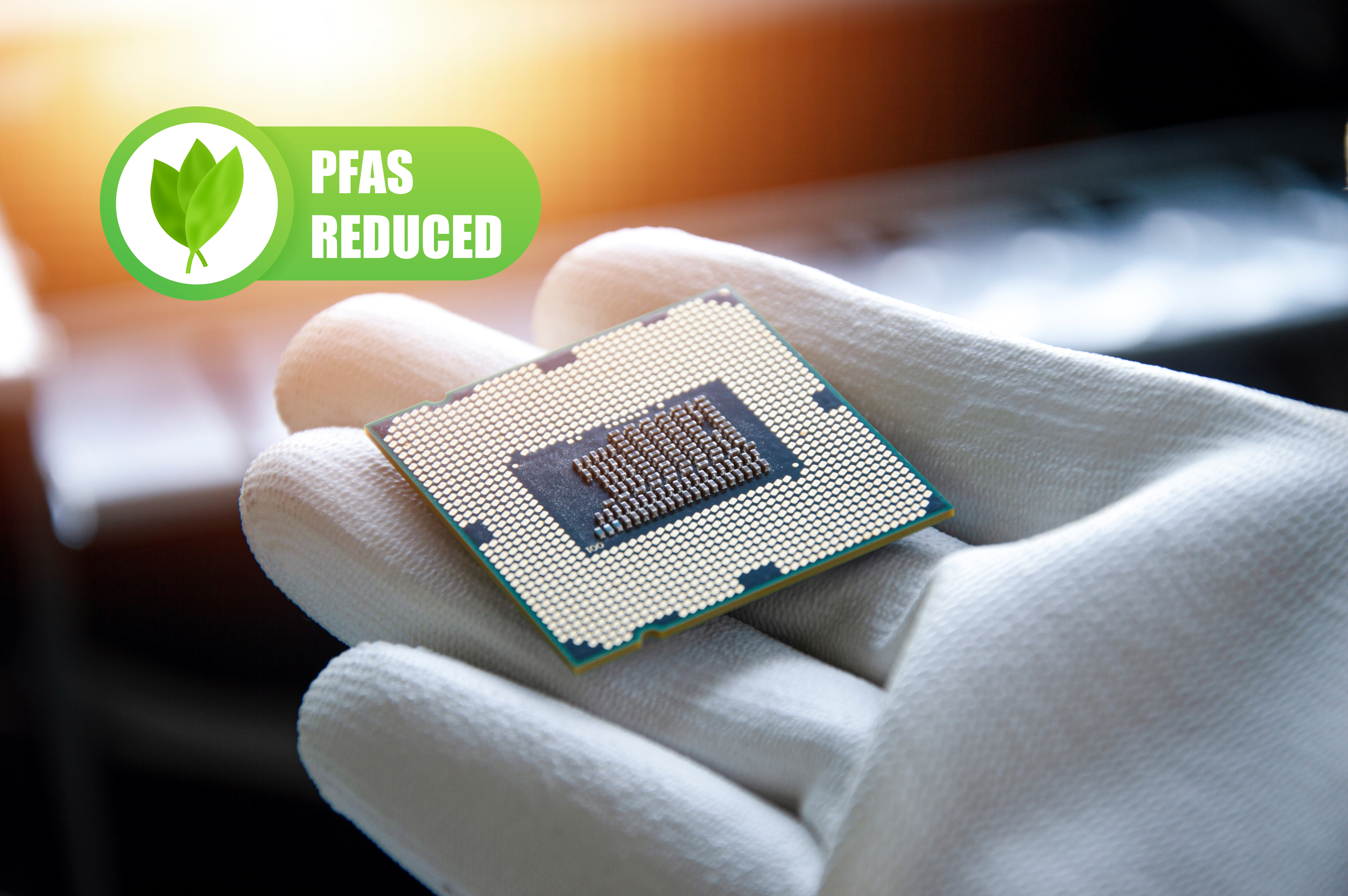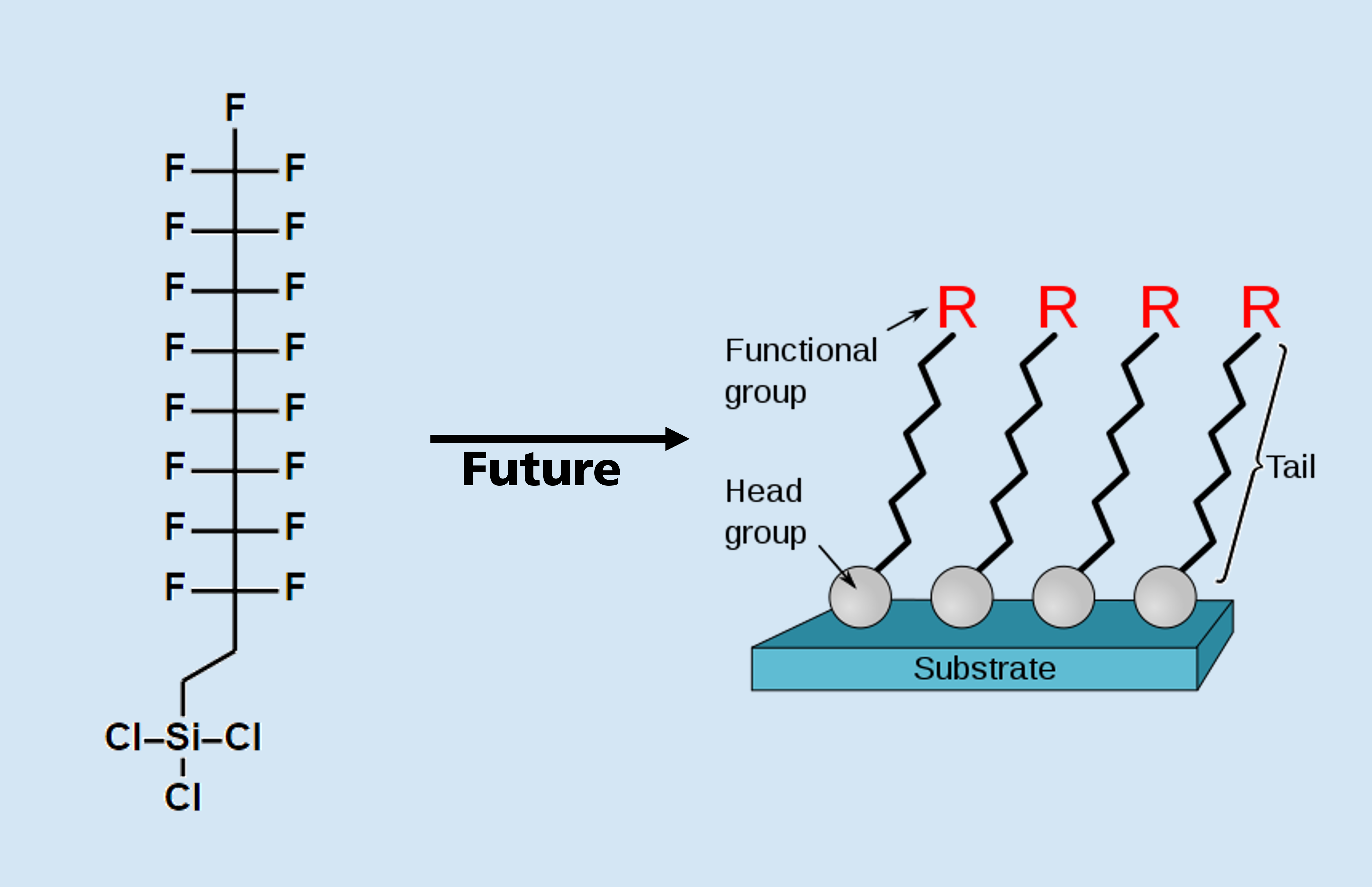

The group of PFAS - per- and polyfluorinated alkyl substances - is large. They are organic compounds in which the hydrogen atoms are completely ("perfluorinated") or partially ("polyfluorinated") replaced by fluorine atoms. PFAS have water- and grease-repellent properties and are very stable and durable. They are therefore widely used in many industrial sectors and also in the home. PFAS are also used in microelectronics production, for example as an antistatic surface on chips or to make chip surfaces hydrophobic.
The disadvantage: many PFAS are classified as toxic. Once they have been released into the environment, they can only be removed with great difficulty, if at all. Solutions must therefore be found.
Regulation of PFAS by the EU can be countered, for example, by retrofitting existing plants. Another way is the replacement by chloroalkanes WITHOUT fluorine on chip and wafer level.
At Fraunhofer IPMS we are conducting researching on:
- Development of processes with harmless substances as a substitute for e.g. PFAS.
- Evaluation of processes and equipment to avoid PFAS leakage
- Use of new less environmentally harmful materials without loss of product quality
- Verification by analytics e.g. determination of hydrophilicity
- Opportunity assessment on long-term effects of alterative materials
 Fraunhofer Institute for Photonic Microsystems
Fraunhofer Institute for Photonic Microsystems